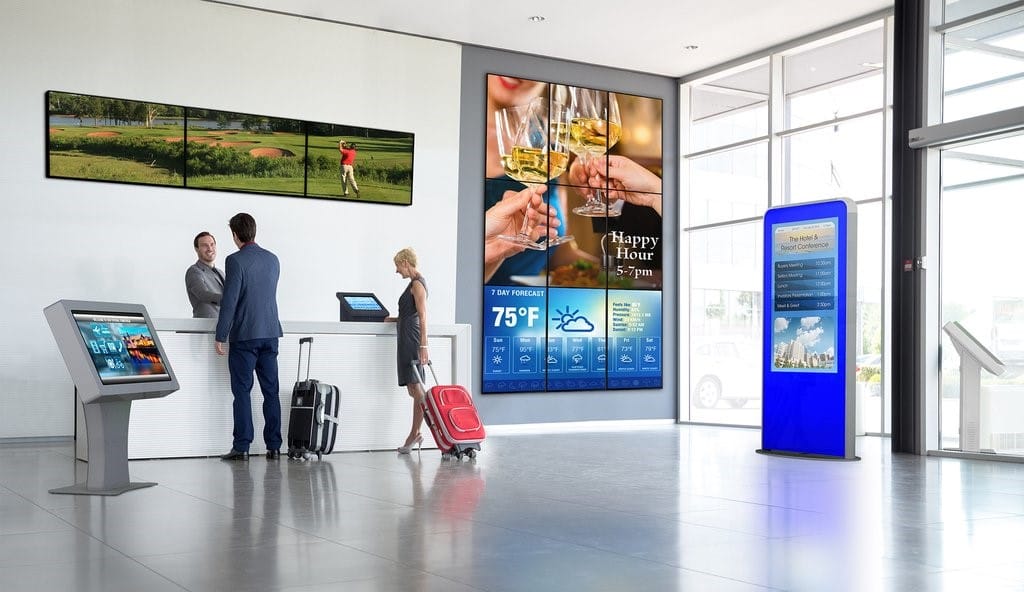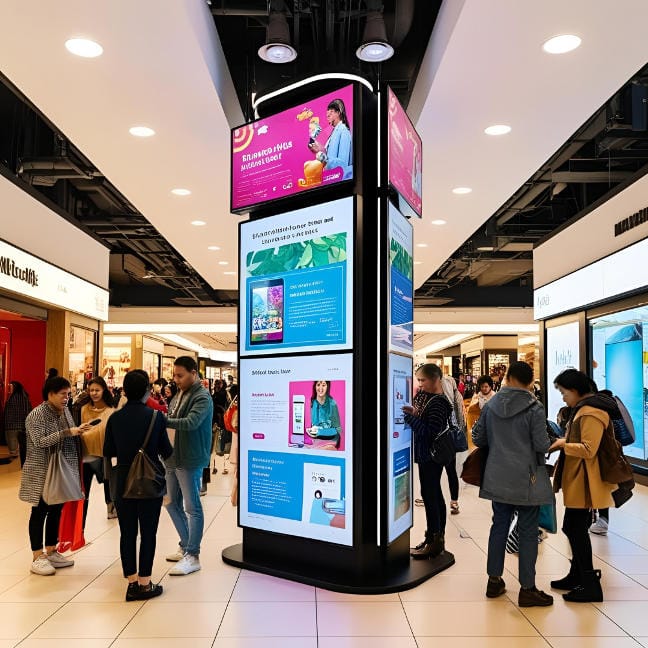The Evolution of Passenger Information
A fundamental revolution takes place in modern transportation through the movement from analog to digital while making the transition from static to dynamic systems. Digital signage has emerged as one of the most crucial elements of transportation modernization to represent information that enhances airport activity and train station communication and bus terminal operations and port management. The confluence of design and functionality makes transportation digital displays transform usual journeys into more user-friendly and knowledge-rich as well as easy-to-understand experiences.
What is Digital Signage for Transportation?

The application of electronic displays for displaying time-sensitive information coupled with wayfinding instructions and emergency notices and entertainment content along with advertisement material defines digital signage in transportation. All transportation spaces utilize these displays as their central dynamic communication platform which surpasses traditional static methods.
Types of Digital Displays for Transport Areas
Real-Time Travel Information
Live arrival and departure schedules supplied to customers help them make informed decisions while decreasing their uncertainty. The information receives maximum accuracy through its synchronization with GPS and transit management systems.
Interactive Kiosks
Travelers can access all necessary services including ticket purchase and map viewing and service inquiries through self-operable touchscreen devices.
Wayfinding Signage
Digital signage technologies in transportation spaces use adjustable mapping systems which adapt automatically to traffic patterns based on crowd amount as well as local construction areas and different periods of the day to provide efficient passenger guidance.
Emergency Alerts
Vital safety alerts together with evacuation instructions and natural disaster warnings take precedence over scheduled content to ensure their immediate delivery.
Revenue-Generating Screens
Transport hubs generate marketing revenue by using their high-traffic digital advertising spaces. Platform analytics allows advertisers to create relevant messages by targeting specific times or locations or distinct audience groups.
Why Use Digital Signage in Transportation?

Improves Passenger Experience
Digital signage systems in transportation environments deliver multilingual communication and real-time content through displays that minimize passenger challenges during their journeys.
Enhances Safety
Networks of displays benefit greatly from the ability to deliver urgent updates during emergency situations. Emergency messages can be modified according to the location requirements to prevent evacuation congestion.
Reduces Operational Costs
The combination of paperless operations with automated update systems lowers both operational expenses and labor requirements for accurate travel information maintenance.
Generates Additional Revenue
The constant flow of revenue generated from dynamic ad slots supplies funding for transportation maintenance while also covering travel costs within certain municipalities.
Digital Signage Across Different Transport Modes
Airports
Digital displays throughout the airport process both guide passenger movements and advertise retail stores as well as supply current flight updates.
Train and Metro Stations
Digital displays in subway transport areas serve three essential functions which include crowd management and train arrival alerts and route guidance.
Bus Terminals
The bus stations in cities and intercity rely on signage to help passengers reach their platforms while promoting mobile ticketing options and displaying ETA information.
Ferry and Cruise Ports
Maritime security benefits from digital signage through the delivery of weather reports and boarding announcements and customs information which results in better overall travel safety.
Future Trends in Digital Signage for Transportation

Augmented Reality (AR) Integration
Large transport hubs will start adopting AR wayfinding features that let users view virtual arrows on real-world environments by simply scanning QR codes through their smartphones.
AI-Driven Personalization
User preferences will identify smart screens which use them to display personalized content including messages and promotions alongside travel recommendations based on profile data or journey records.
Voice-Activated Displays
Signage systems of the future will have voice activation which benefits those who need audio assistance or travel through touchless environments.
Green Displays
New technological developments concentrate on developing displays that require minimal power while using solar energy and implementing reusable materials to enhance transportation sustainability.
Designing the Best Digital Signage for Transportation
Legibility and Clarity
Each digital signage display should use appropriate fonts and lighting settings to enhance legibility as passengers view information from different distances under varied light settings.
Localization
Multilingual features deliver clear communication to international tourists, particularly in worldwide transportation centers.
ADA Compliance
Braille touchpoints, together with audio output and wheelchair-height interfaces, enable signage to become accessible for all users.
Digital Signage Software Features That Matter
• Centralized Content Management: Organizations can update hundreds of screens located in different locations through a single dashboard for content management.
• Real-Time Data Feeds: The software enables real-time data feeds by connecting API services that always provide weather updates together with transit information as well as news content.
• Remote Monitoring: Through remote monitoring users can access their display systems to monitor health status and update software and resolve technical issues regardless of physical location.
How to Implement Digital Signage Solutions for Transport Areas

Step 1: Assessment
Professional assessments of foot traffic patterns alongside pain points and communication failures will provide the best positions to place signage effectively.
Step 2: Technology Selection
Pick hardware along with software which suits your location’s climate systems as well as infrastructure and passenger operational requirements. The outdoor signs require a weatherproofing design and strong bright capabilities.
Step 3: Deployment
Displays must be installed, and staff members need training to synchronize data sources with real-time information for accurate passenger communication.
Step 4: Monitoring and Optimization
Your analytics capability should be used to adjust content strategies as well as track the effects of your signage. Such implementation results in better user engagement along with superior overall user experience.
Take Your Transport Hubs to the Next Level with Nento’s Digital Signage Solutions
Your transportation infrastructure needs modern digital signage solutions available at the current moment. Digital signage solutions from Nento adapt their advanced technology to fulfill all client requirements including passenger experience improvement and operational efficiency advancement and environment engagement initiatives.
Start today with Nento’s state-of-the-art digital signage for transportation. Reach out immediately to speak with our team about free consultations which expose how we simplify transport hub communication. We will assist your organization to develop spaces that better serve your passengers with superior intelligence solutions.
Contact Nento right now to start improving your operations.
FAQs: Digital Signage for Transportation
How expensive is it to install digital signage in a transport hub?
The total investment costs depend on several elements including screen quantity as well as display technology and necessary software components. The revenue from advertisements together with operational cost reductions is commonly paid for the initial expenses.
What’s the lifespan of a transport digital display?
High-quality displays maintained correctly will operate between 5 to 10 years.
Can digital signage work in outdoor environments?
Yes. Digital signs function in external environments due to weatherproof boxes and anti-glare screens with high-brightness display capabilities.
Is internet connectivity required for all digital signage?
For real-time updates, yes. The system offers offline functionality that allows static content or cached information to display.
Are there security risks associated with digital signage systems?
Digital signage networks require protection with encryption, together with firewalls and access controls, to stop hackers and data theft from succeeding.





